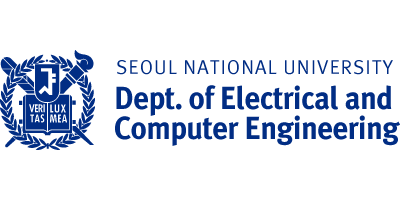Professor Byung-Ho Lee’s team identified the visual perception factors in holographic displays for fatigue reduction.(2022.08.17)

Professor Byung-Ho Lee’s research team. (From left, Professor Byung-Ho Lee, Researcher Dong-Yeon Kim, and Researcher Seung-Woo Nam) [Photo: Seoul National University]
The SNU College of Engineering (Dean Yoo-Seok Hong) announced that Professor Byung-Ho Lee’s research team under the Department of Electrical and Computer Engineering identified the cause of the limited response to focus control when viewing a 3D holographic display and proposed a solution to this problem.
The team solved the problem of eye fatigue and the feeling of the eye not being able to focus properly on the image when viewing a holographic display, which is emerging as an alternative to a head-mounted display (HMD) in the field of VR and AR.
Holographic displays produce a 3D image through lasers, which is a coherent light source, and a spatial light modulator that reproduces a numerically analyzed digital hologram. They use diffraction and interference of light to create 3D images but those in use in amusement parks or science museums are monochromatic or have low resolutions.
During the process of increasing the resolution of a 3D image, the 3D image may tend to appear flat, as in 2D images, or appear mottled, as if grains were sprinkled on the image. The research team revealed that the difficulty to focus when viewing holographic 3D images is caused by these two reasons. The study also refutes the widely known proposition that holographic displays induce natural focusing responses.
Trying to increase the 3D resolution results in additional stains being visible, limits the focus response of the view, and adds to eye fatigue.
To overcome these problems, the team proposed a method that reduces the extent of mottled faults, and a method that optimizes holographic images by utilizing the eye’s afterimage effect. It was also revealed that such methods do exhibit improved focus control response when viewing holographic images over conventional methods.
Researcher Dong-Yeon Kim of the research team described the study as “a study that overcame the biggest difficulties in the initial stages of VR or AR using holographic displays.” The research, which was supported by the Ministry of Science and ICT, and the Digital Content Proprietary Technology Development Program of the IITP, was published in the ACM Transactions on Graphics on July 22, 2022.
There was also an oral presentation session at SIGGRAPH 2022 held in Vancouver, Canada from August 8 to 11.
[Paper] D. Kim†, S.-W. Nam†, B. Lee, J.-M. Seo, and B. Lee, “Accommodative holography: improving accommodation response for perceptually realistic holographic displays,” ACM Transactions on Graphics (SIGGRAPH 2022), vol. 41, no. 4, article 111, 2022
Source: https://ece.snu.ac.kr/community/news?bm=v&bbsidx=52781
Translated by: Do-Hyung Kim, English Editor of the Department of Electrical and Computer Engineering, kimdohyung@snu.ac.kr


